Angkor Thom
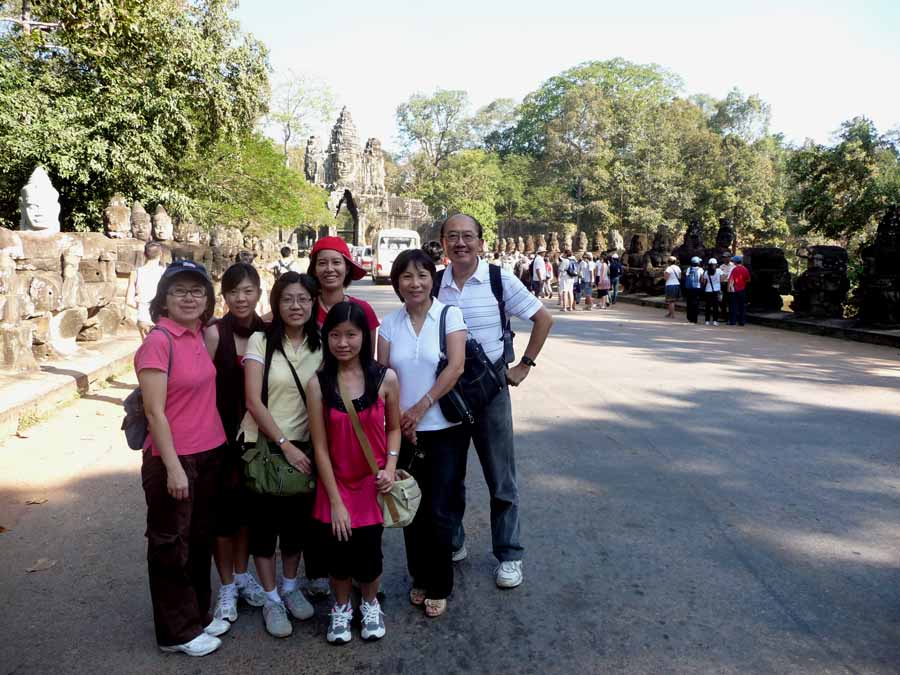
|
|
Angkor Thom is located just one mile north of Angkor Wat. |
|
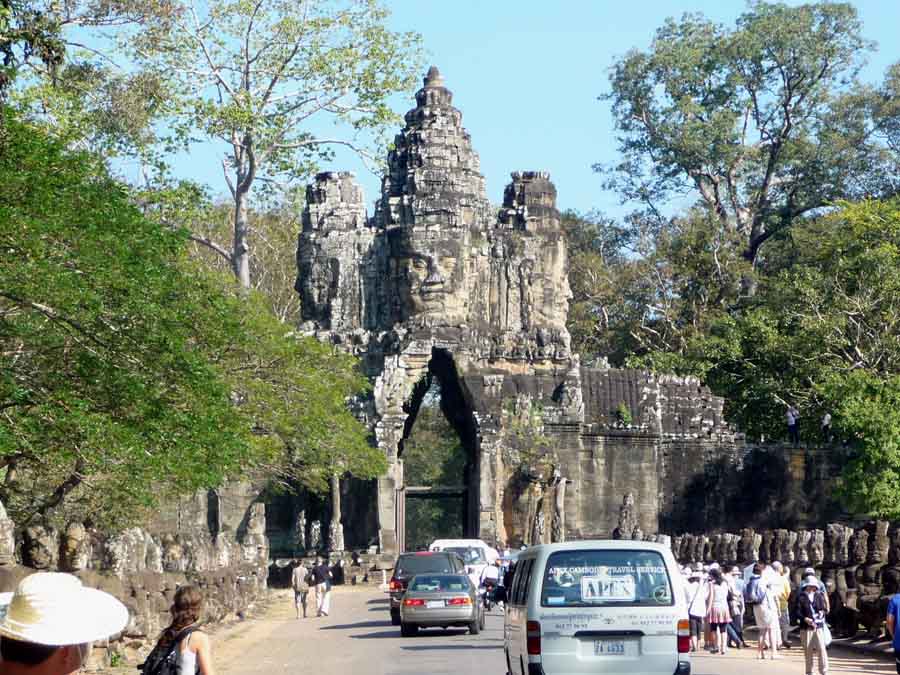
|
|
It was the capital of King Jayavarman VII in the late 12th century. |
|
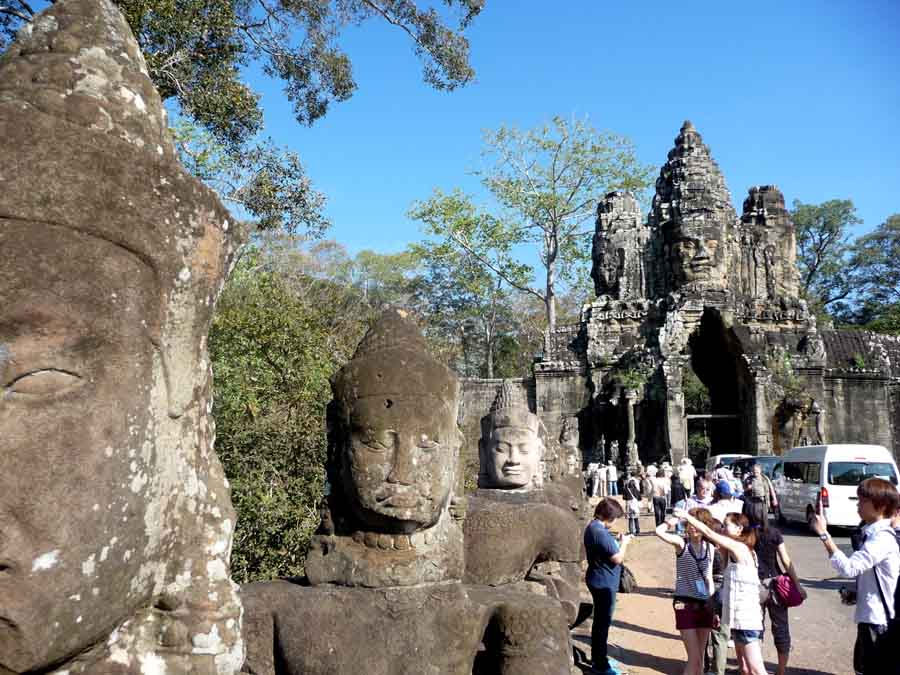
|
|
The name Angkor Thom means the Great City. |
|

|
|
A moat surrounds Angkor Thom. |
|

|
|
And a causeway across the moat connects the south gate to the outside world. |
|
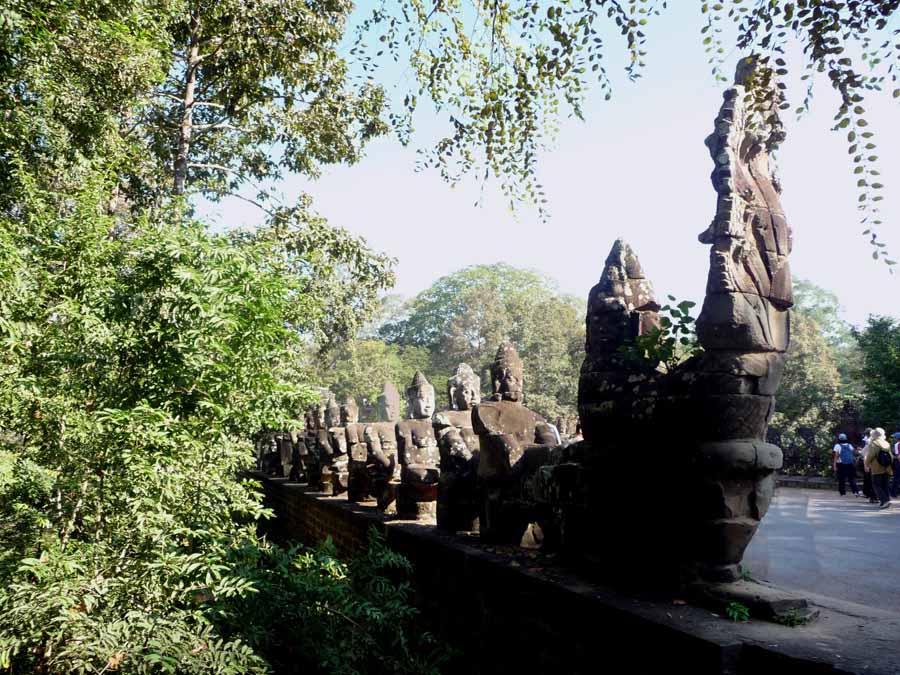
|
|
A row of 54 devas - Hindu's gods, line the causeway on the left. |
|
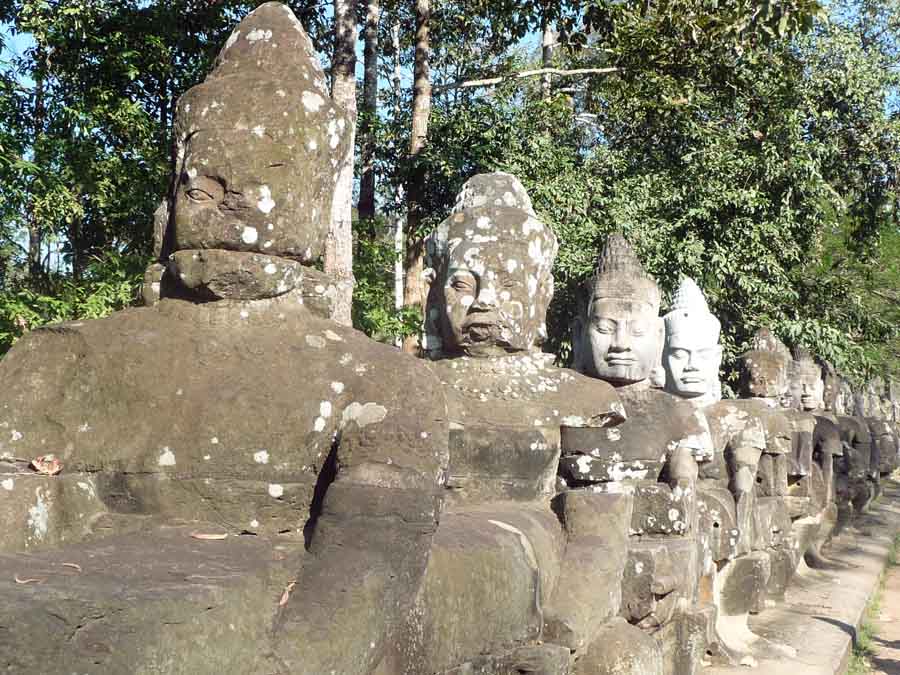
|
|
They are said to represent soldiers returning home after winning a battle. |
|
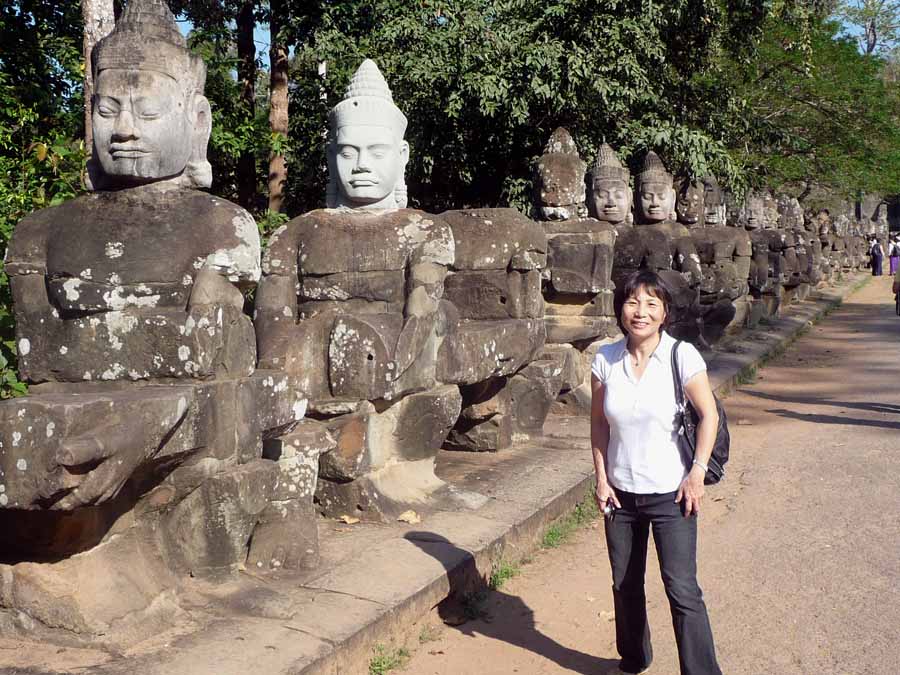
|
|
Each soldier holds a nāga - a serpent in a tug-of-war position. |
|
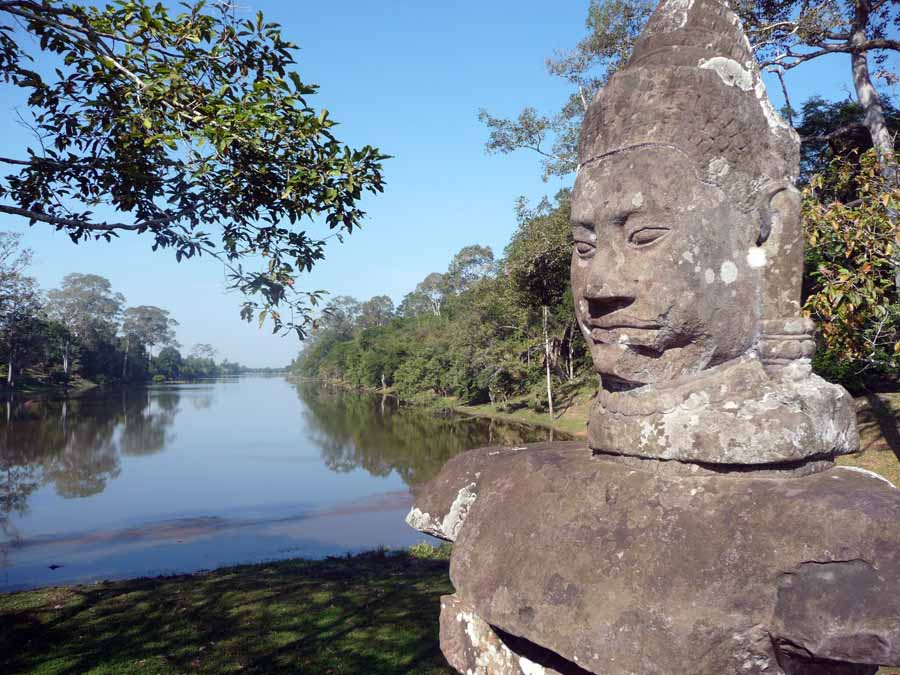
|
|
The winning soldiers on the left are smiling. |
|
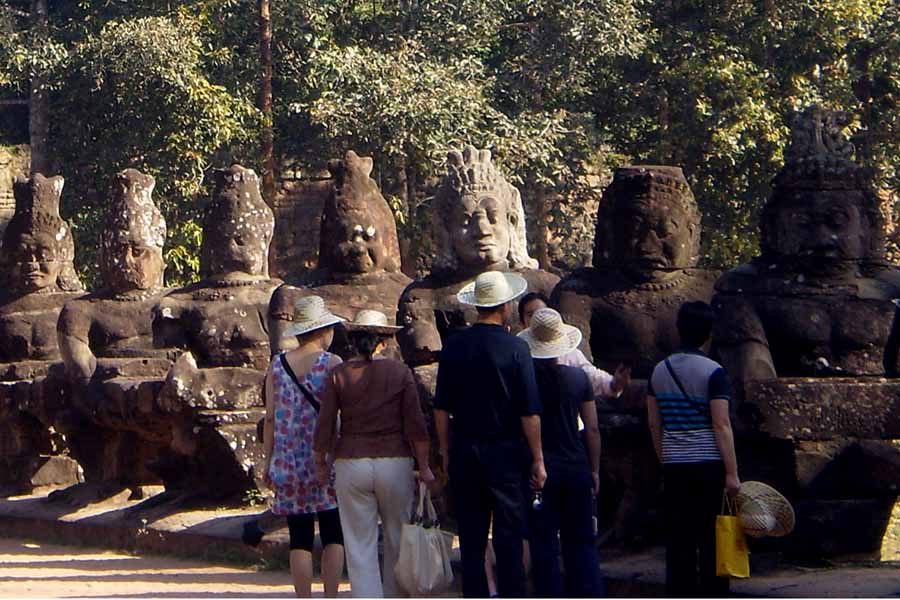
|
|
Soldiers on the right side of the causeway were asuras, representing Hindu's sinful gods. There are also 54 of them. |
|
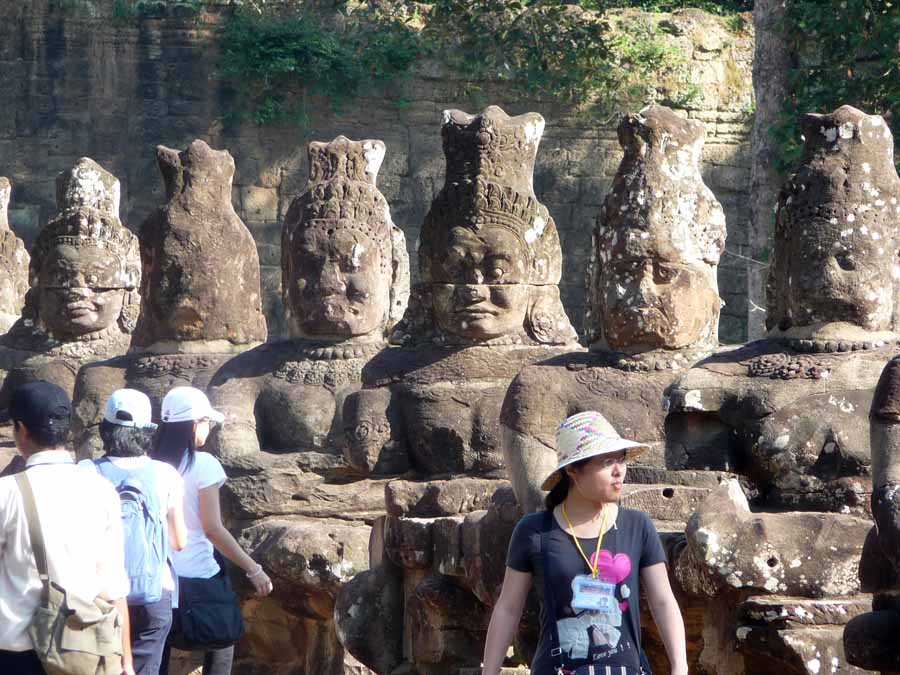
|
|
These soldiers lost the battle and were not smiling. |
|
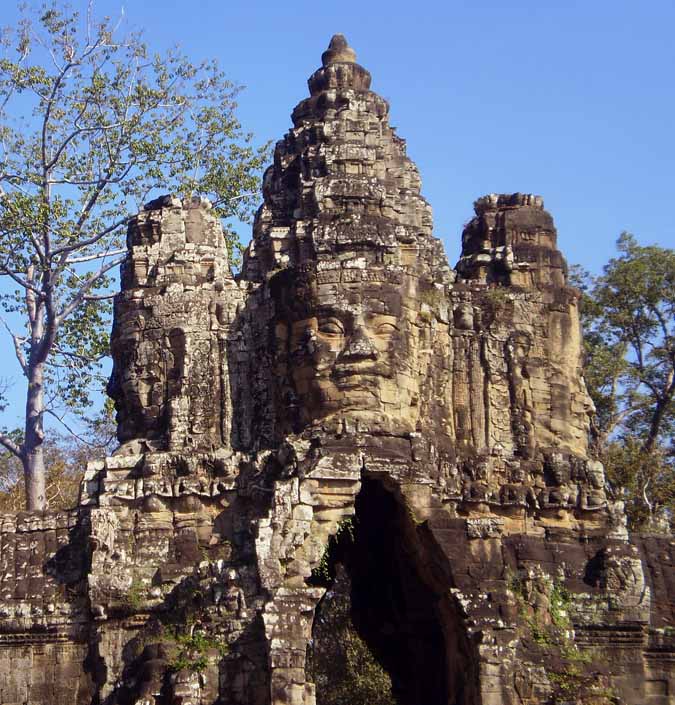
|
|
There are four huge faces of the Bodhisattva Lokeshvara guarding the southern gateway to Angkor Thom. One would enter Angkor Thom through the south gate. |
|
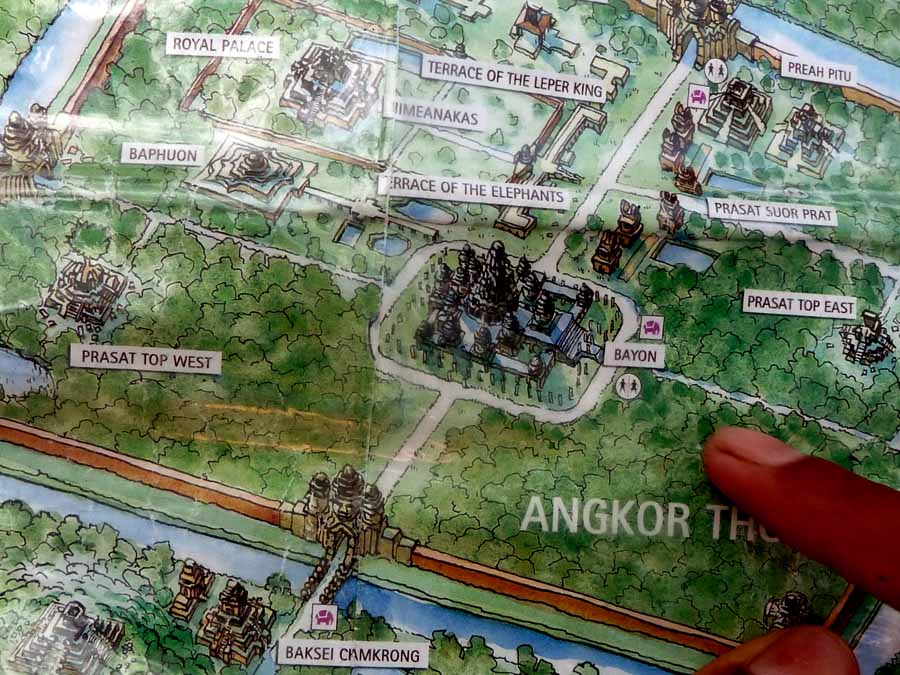
|
|
On this map, the south gate is at the bottom. Bayon, the state temple is at the center of Angkor Thom. Terrace of the Leper King, Terrace of the Elephants, and many other historical sites are all within the proper of Angkor Thom. |
|
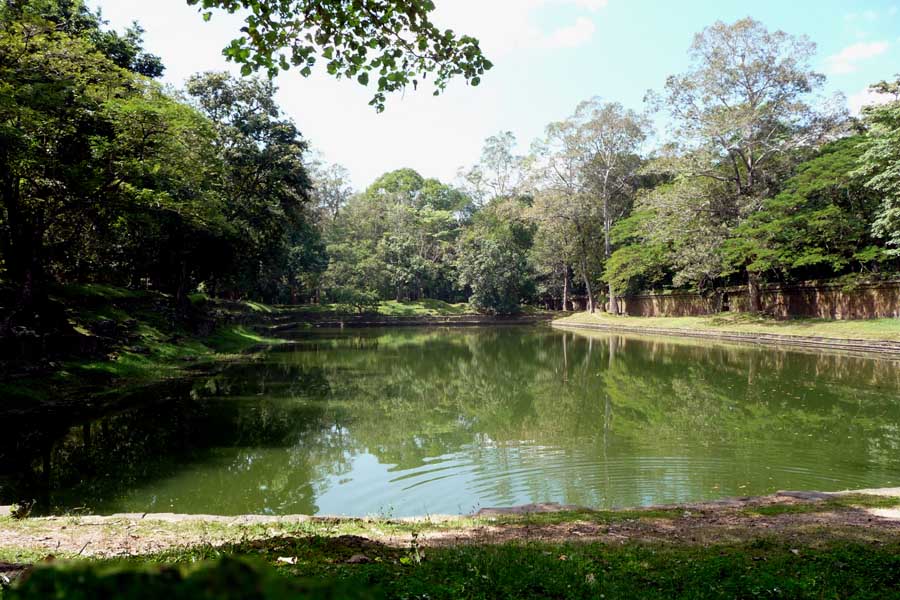
|
|
Sras Seri is the king's bath. A smaller women's bath is behind the camera. A visiting Chinese diplomat Zhou Daguan in the 13th century remarked that "the bathers shamelessly entered the pool completely naked, covering themselves only fleetingly with their left hands". |
|
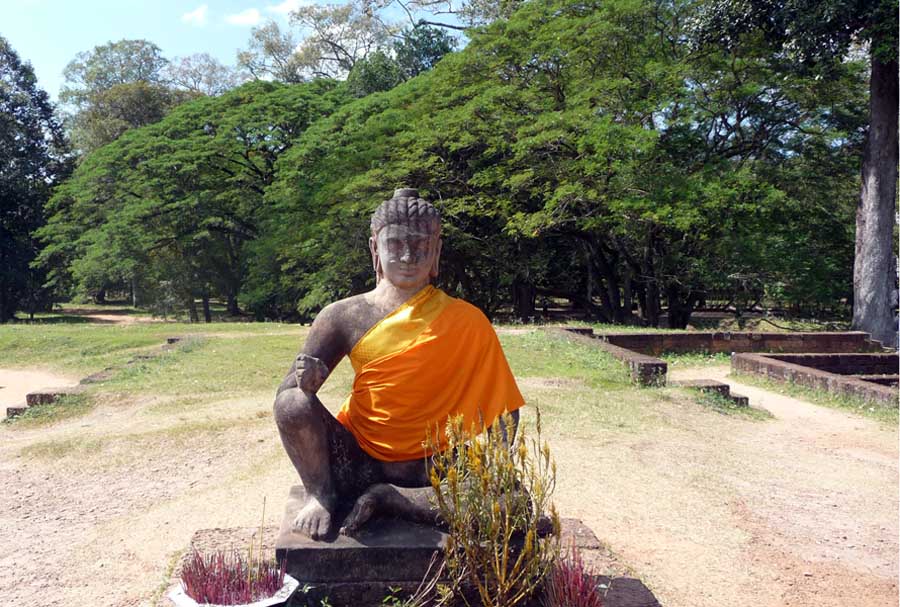
|
|
Terrace of the Leper King depicts the Hindu god Yama, the god of Death. In the legend, King Jayavarman VII was a leper and so were some other Khmer kings suffering from this disease. |
|

|
|
Looking south from the Terrace of the Leper King. |
|
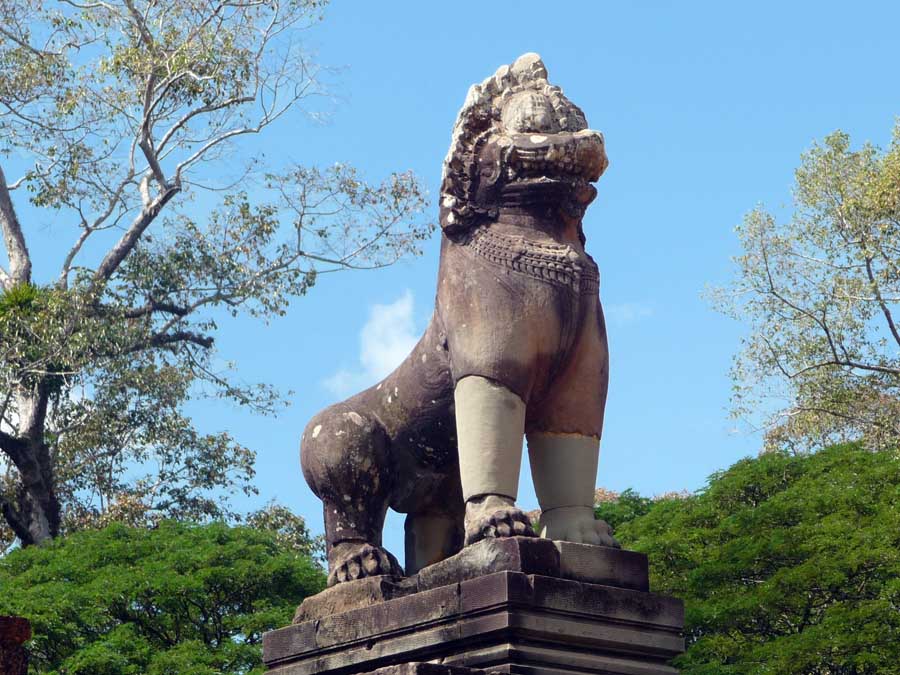
|
|
Guardian lion. |
|
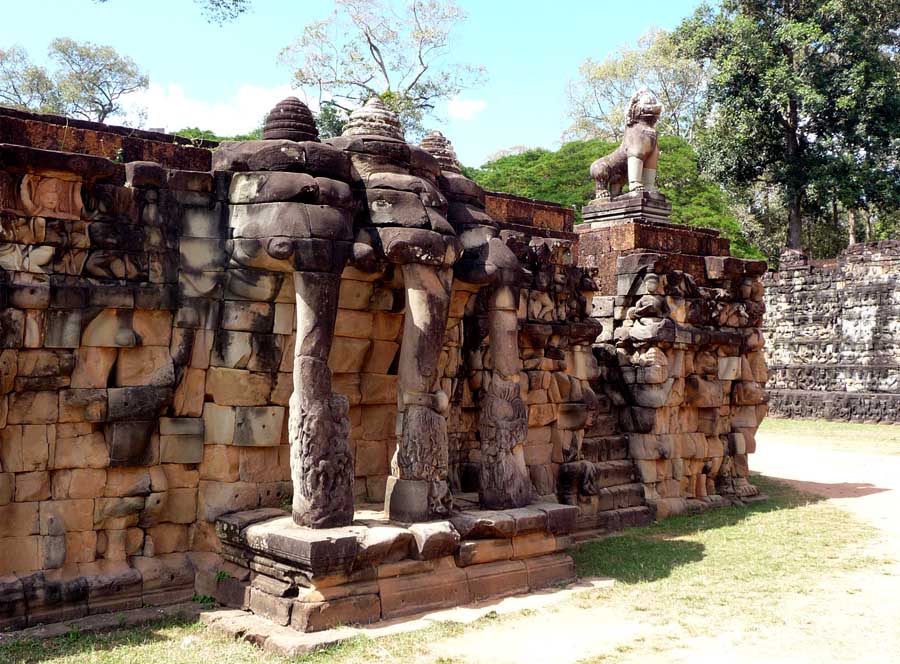
|
|
Three-headed elephant in the Terrace of the Elephants. |
|
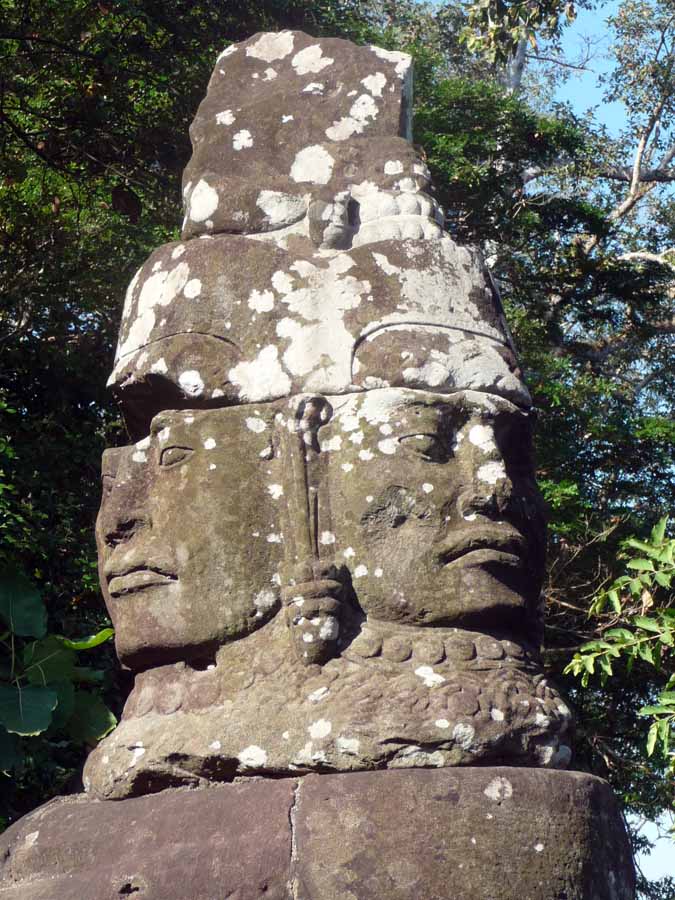
|
|
The two faces of a soldier. |
|
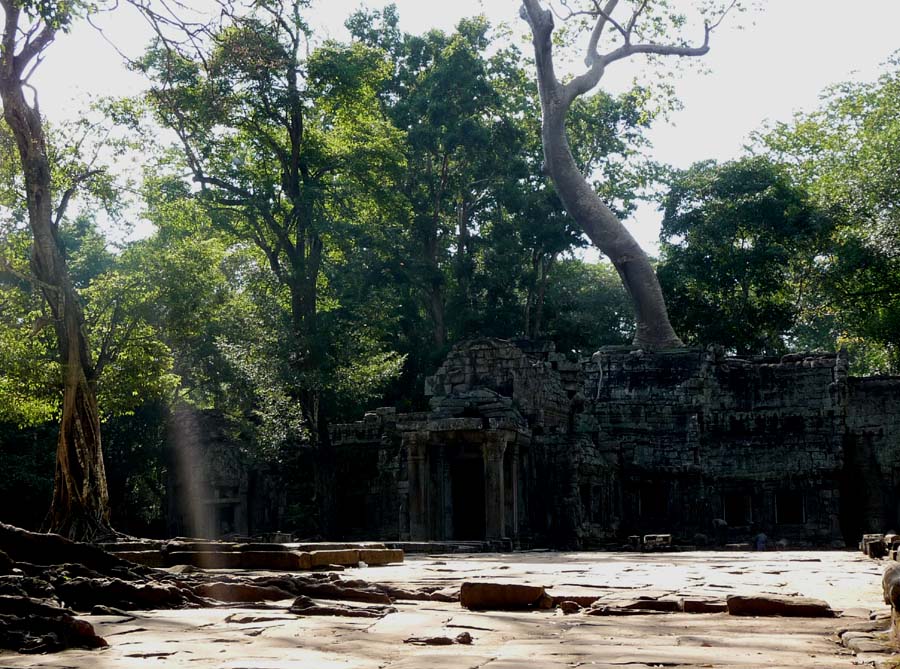
|
|
Ta Prohm is located just one mile to the east of Angkor Prom. The temple was built in 1186 by Jayavarman VII for his mother - deified as the Mother of all Buddhas. Unlike other temples in the area, this one is left in the jungle and is quite secluded. It was said that during the Jayavarman's era, more than 12,640 people used to live here including 18 high priests and 615 women dancers, the asparas. |
|

|
|
It is hard to believe that Angkor Wat disappeared from earth until you witness how vegetation and the trees root systems can strangle manmade structures and eventually break them down. The local preservation authorities had decided just to partially trim back the roots of the banyan and kapok trees to demonstrate this natural destructive force. |
|